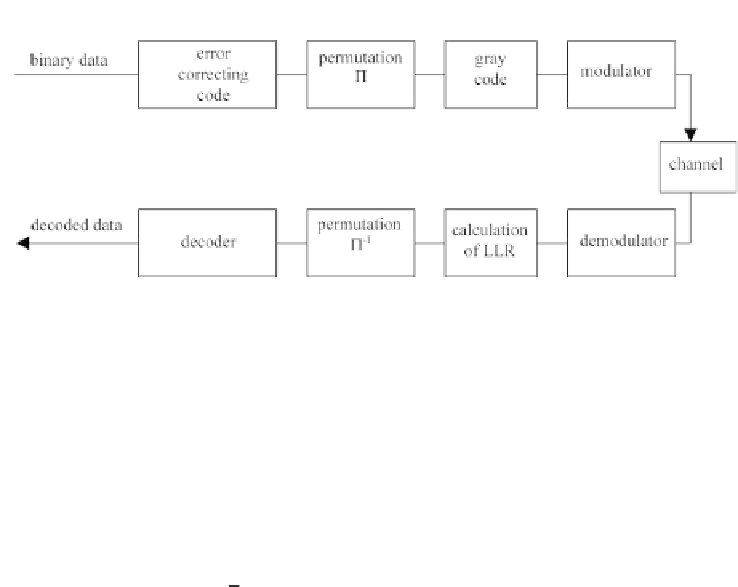Cryptography Reference
In-Depth Information
Figure 3.7 - Transmission scheme using the pragmatic approach.
The error probability
P
e
is the probability of deciding about an incorrect
codeword instead of the codeword emitted. Let
N
s
be the number of modulated
symbols that differ between the incorrectly decoded codeword and the codeword
emitted. Also let
φ
i
}
N
s
) be the transmitted phase sequences
for these symbols that differ. It is possible to express
P
e
as a function of these
phases and of the signal to noise ratio:
{
φ
i
}
and
{
(
1
≤
i
≤
⎡
⎣
i
=1
,N
s
⎤
⎦
sin
2
ϕ
i
−
1
2
erfc
E
s
N
0
ϕ
i
P
e
=
(3.23)
2
where
E
s
is the energy per symbol emitted and
N
0
the monolateral noise power
spectral density. It is however not possible to exploit (3.23) in the general case.
We require an additional hypothesis, which is then added to the three hypotheses
formulated in the previous section, and assume that
N
S
is much lower than the
size of the interleaved codewords:
•
Hypothesis 4:
A symbol does not contain more than one opposite bit in
the correct codeword and in the wrong codeword.
This hypothesis allows the following probabilities to be expressed:
ϕ
i
=
π/
4
ϕ
i
=3
π/
4
Pr
{
ϕ
i
−
}
=2
/
3;
Pr
{
ϕ
i
−
}
=1
/
3
which means that two times out of three on average, the Euclidean distance
between the concurrent symbols is
2
E
T
sin(
π/
8)
and, one time out of three, is
raised to
2
E
T
sin(3
π/
8)
(Figure 3.8).
Considering the asymptotic case, that is, putting
N
s
=
d
min
, yields:
PER
8-PSK
,
Π random
≈
k
3
d
min
d
min
j
2
j
+1
erfc
E
N
0
j
sin
2 3
8
j
)sin
2
8
j
=0
d
min
(3.24)
+(
d
min
−
















